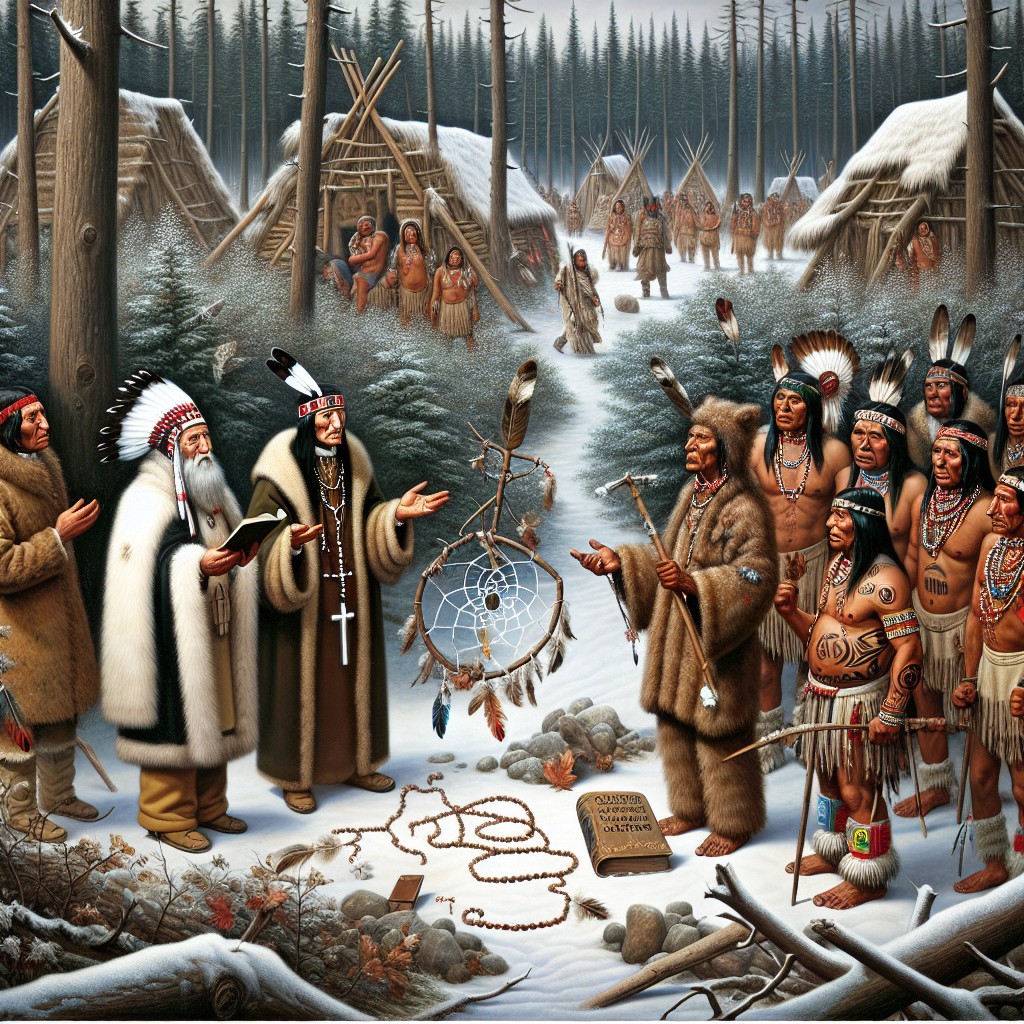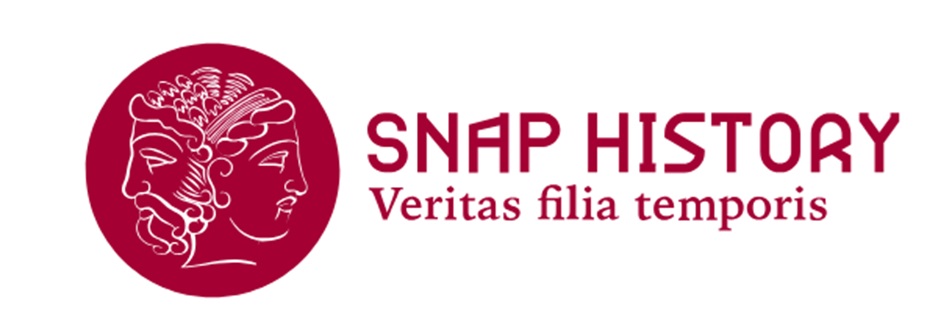Christians vs. Traditionalists
A religious conflict within the Huron of Canada

Some Hurons who converted to Christianity discuss with a group of Huron who remained attached to their traditional beliefs. Image generated with Artificial Intelligence.
In the 1640s, many Huron people converted to Catholicism. At first, these were mainly children, the sick, and the elderly, often baptized at the point of death. Later, however, conversions also began to involve village chiefs and warriors. Many Hurons, impressed by the Jesuits’ dedication in caring for the sick, their willingness to adapt to local ways of life, and their study of Huron culture, came to believe that the new faith could strengthen their community.
Conversions were also driven by the desire to draw closer to French culture, their European allies, and to reinforce commercial ties. By around 1648, roughly 15 percent of the Hurons were Christian. This percentage rose to 50 percent when considering only those who paddled the canoes used to reach French settlements. For this reason, men, more involved in trade, tended to convert in greater numbers than women, who were primarily devoted to agriculture.
The converts refused burial in communal ossuaries, declined to fight alongside their pagan companions, and avoided holding positions that required participation in traditional rituals. This led to the emergence of a “Christian faction” within the Huron Confederacy. In response, a “traditionalist faction” developed, hostile to the new religion, eager to expel both converts and Jesuits from their villages, and seeking to abandon the French alliance in favor of agreements with the Hurons’ long-standing enemies, the Iroquois, who at the time threatened invasion.
The Deer Tribe and the Rock Tribe, more exposed to Iroquois attacks and thus more inclined to negotiate, aligned with the traditionalists. Among the Christian tribes, however, were the Rope Tribe and the powerful Bear Tribe, which was less vulnerable to Iroquois raids and had long been in contact with the Jesuits. The village of Ossossané, regarded as the center of the Bear Tribe and the entire Huron nation, had by then become predominantly Christian. Its leaders banned pagan ceremonies and entrusted a Jesuit with the task of overseeing collective morality.
The traditionalist faction tried, unsuccessfully, to sabotage the French alliance and secure a treaty with the Iroquois. Ultimately, the Iroquois attacked and destroyed the Huron Confederacy. Afterward, many members of the Deer and Rock tribes were easily assimilated into Iroquois culture, as they were already opposed to both Christianity and the French.
A.I. Silver, An Introduction to Canadian History, Canadian Scholar's Press, 1991.
Luca Codignola, Luigi Bruti Liberati, Storia del Canada. Dalle origini ai giorni nostri, Milan, Bompiani, 1999.
2025-10-04
Salvatore Ciccarello
